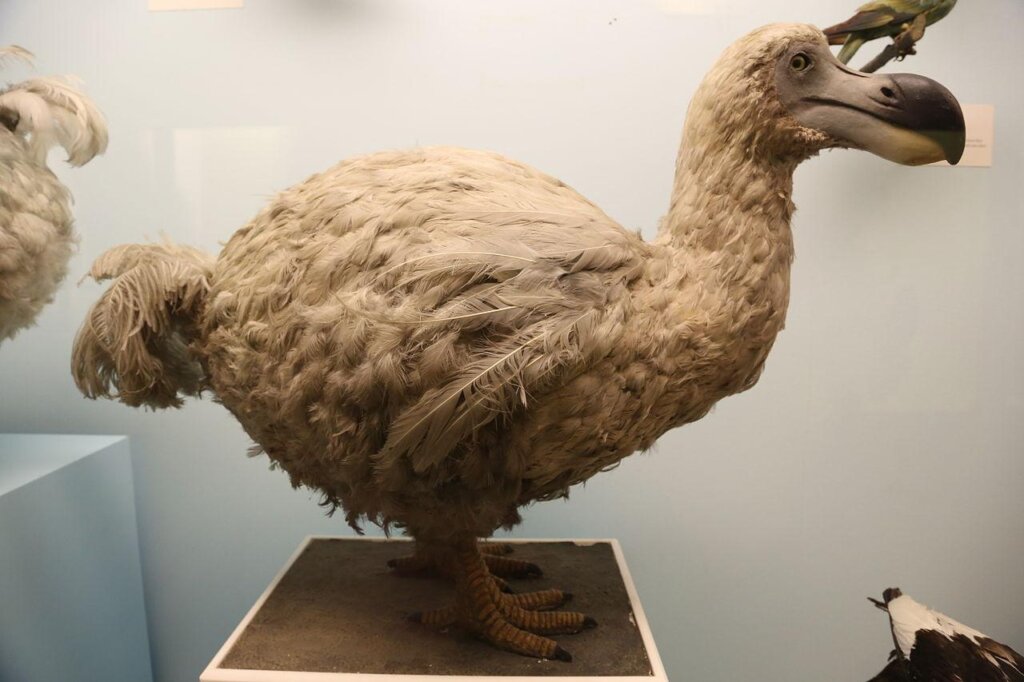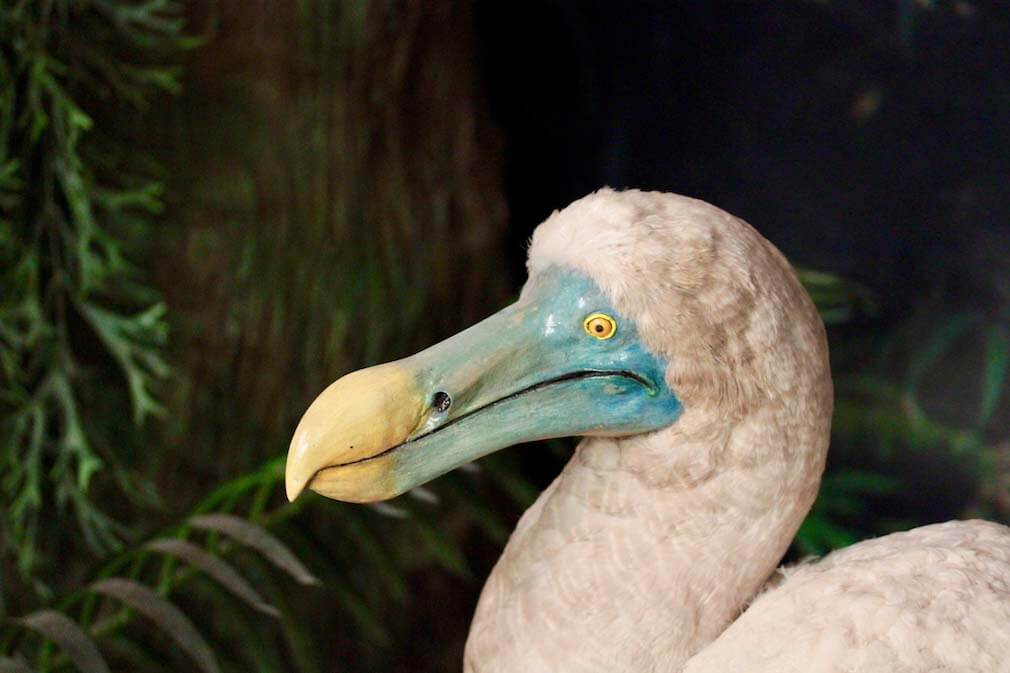Bringing Back the Dodo? Ambitious Plan Attracts Investors and Critics

In several science-fiction feature films, the idea of reviving extinct species through their DNA has been put forward. Although it’s true that much of the premise lacks scientific basis, there are currently certain molecular techniques that could make a similar project possible. With this idea in mind, the biotechnology company Colossal Biosciences has announced a new plan to bring back the dodo.
This plan has attracted the attention of many investors, but also has its critics. Read on and find out how they plan to do it.
What is Colossal Biosciences?
Colossal Biosciences is a company founded in 2021 by entrepreneur Ben Lamm and Harvard geneticist George Church. Concerned about the enormous number of species currently eradicated, they have made it their goal to develop molecular biology techniques that will revive extinct animals.
While this feat is extremely complex, the scientists at Colossal Biosciences firmly believe that it’s possible in the long term. In fact, they have two projects in progress that seek to bring back the woolly mammoth (Mammuthus primigenius) and the Tasmanian wolf (Thylacinus cynocephalus). This means that they already have experience in the field and their progress looks promising.

Why is it important to bring back extinct species?
The ecosystem is kept in balance by the interaction between living things and their environment. Each species has a fundamental role in its environment, regulating to a greater or lesser extent the lives of the others. If one disappears, the others get out of control and generate a domino effect that ends up changing the habitat and even destroying it.
A perfect example of this is the case of Yellowstone Park, which had suffered the extirpation (local extinction) of the gray wolves that inhabited its forests. Shortly after that, the number of elk increased, riverbeds diminished, soils became more arid, and vegetation became too sparse.
Thanks to the efforts of various specialists, the gray wolf was reintroduced to the area after 70 years of absence. In just a few years, this carnivore controlled the herbivores and stabilized the ecosystem. By reducing the number of elk, the vegetation was able to grow. In turn, the roots held more moisture and allowed water infiltration, which also benefited the rivers and increased their flow.
Of course, some specialists argue that the reintroduction of the wolf didn’t completely restore the Yellowstone Park ecosystem. However, it’s clear that the absence of a single species is capable of drastically changing the characteristics of the environment. This is why bringing back extinct species could help the conservation and restoration of the environment.
The ambitious plan to “revive” the dodo
To bring the dodo bird back to life, scientists at Colossal Biosciences have outlined a long-term action plan with several crucial steps. These are listed below:
- Decipher its genome: The DNA contains information about the physical characteristics, biology, and evolution of the species, so it’s important to know it thoroughly.
- Obtain primordial cells: It’s necessary to obtain the appropriate germ cells to introduce the donor genome (from the dodo).
- Identify suitable birds for surrogacy: Identify the species most closely related to the extinct species in order to transfer the modified germ cells and initiate gestation.
- Develop and improve gene editing techniques: Advance the use of CRISPR technology, a natural gene editor that would allow us to repair or modify genomic samples (if necessary).
- Gestation, incubation, and hatching: This is the experimental phase of the project. It consists of introducing the germ cells modified with the dodo genome into a surrogate mother, starting gestation, producing the egg, incubating it, and waiting for hatching.
The new dodo will be different from the old one
The molecular techniques that will be used to bring back the dodo bird have several limitations. One is the need for an intact genomic sample in good condition. Without this, embryonic development is likely to fail or induce mutations or malformations in the new species.
The biggest problem with this is that fossils often don’t contain complete and undamaged DNA samples, so it will be necessary to fill in the gaps with genomes from another species. This means that the dodo bird that results from this procedure will have genes that the ancient one didn’t have, meaning that it won’t be an exact clone of the original.
It’s important to note that gene editing isn’t done randomly, but requires an exhaustive study to detect genes that are suitable and compatible with the dodo. Although it sounds simple, the process is time-consuming and perhaps one of the most challenging aspects of the project.

Investors are excited about the Colossal Biosciences project
Although the Colossal Biosciences team hasn’t yet begun the experimental phase of its projects, the promise of reviving extinct species has attracted the attention of investors. Many are excited about the possibility of ecosystem repair, but others are focused on the utility of gene editing technology.
The biotech company’s approach involves the development of new and efficient molecular techniques. Therefore, it’s possible that the same technology can be applied in other areas such as the health sector. This is another reason why investors have been so excited about the project.
Not everything is solved by bringing an extinct species back to life
The news of this project not only attracted investors, but also attracted the attention of different critics and retractors who question the promises of the research. On the one hand, they mention that it’s of little use to bring back to life species that became extinct hundreds or thousands of years ago, as their habitats don’t exist today. So, it would be impossible to reintroduce them to repair the ecosystem.
They also emphasize that this type of project could make people think that they can destroy nature and then repair it easily, when, in reality, prevention through species protection is better and less costly than these proposals.
The position of critics and detractors is understandable, but it’s impossible not to feel attracted by the possibility of bringing extinct species like the dodo back to life. Of course, it’s still only a possibility and nothing is guaranteeing the success of the project. However, if completed as planned, it will be an incredible breakthrough in science that will completely change the world of molecular biology.
All cited sources were thoroughly reviewed by our team to ensure their quality, reliability, currency, and validity. The bibliography of this article was considered reliable and of academic or scientific accuracy.
- Ferreira, B. (2023). Scientists Launch Project to ‘De-Extinct’ the Dodo, Reintroduce to Natural Habitat. Recuperado el 24 de febrero de 2023, disponible en: https://colossal.com/scientists-launch-project-to-de-extinct-the-dodo-reintroduce-to-natural-habitat/
- Colossal Laboratories & Biosciences. (2022). Thylacine [How We plan to de-extinct the TASMANIAN TIGER ]. Recuperado el 24 de febrero de 2023, disponible en: https://colossal.com/thylacine/
- Colossal Laboratories & Biosciences. (2023). Dodo Bird [How We plan to de-extinct the Dodo bird]. Recuperado el 24 de febrero de 2023, disponible en: https://colossal.com/dodo/
- Colossal Laboratories & Biosciences. (2022). The Mammoth. Recuperado el 24 de febrero de 2023, disponible en: https://colossal.com/mammoth/
- Colossal Laboratories & Biosciences. (2022). De-Extinction. Recuperado el 24 de febrero de 2023, disponible en: https://colossal.com/de-extinction/
- Ripple, W. J., & Beschta, R. L. (2003). Wolf reintroduction, predation risk, and cottonwood recovery in Yellowstone National Park. Forest Ecology and Management, 184(1-3), 299-313.
This text is provided for informational purposes only and does not replace consultation with a professional. If in doubt, consult your specialist.